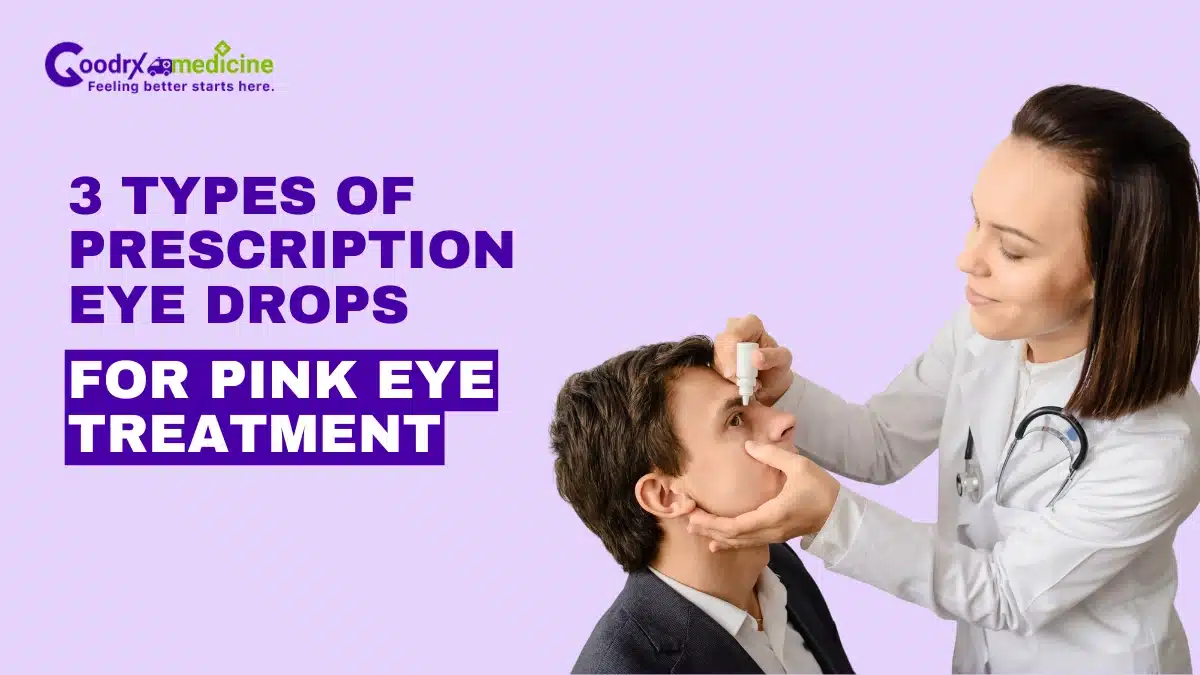Red, itchy, and watery eyes can be both uncomfortable and alarming, especially when the problem turns out to be Pink Eye. This common eye condition doesn’t just irritate, but also disrupts your daily routine, making it hard to work, drive, or even relax.
While some cases can improve on their own, there are times when you need extra help to heal and stop the infection from spreading. That’s where prescription eye drops for Pink Eye come in. These medications are made to treat the specific cause and offer targeted, effective relief.
They not only ease redness, itching, and swelling, but also help you recover faster and protect your vision. Understanding when and why prescription eye drops are necessary is the first step toward clear, healthy, and comfortable eyes again.
This article explains all you need to know about the available eye drops for Pink Eye.
Different prescription eye drops for Pink Eye
Pink Eye, also known as Conjunctivitis, is defined as inflammation of the conjunctiva, the thin tissue that covers the sclera (the white portion of the eyeball) and lines the inside of the eyelid. This common eye condition can cause redness, tears, and discomfort.
Pink Eye usually goes away on its own in a few days, but if the problem persists, you must consult a doctor. Depending on the factor causing it, there are three primary forms of Conjunctivitis:
- Bacterial Conjunctivitis
- Viral Conjunctivitis
- Allergic Conjunctivitis.
Your ophthalmologist considers both your symptoms and the cause of the Conjunctivitis while determining the best Pink Eye treatment for you.
Save up to 90% on your medicine bills
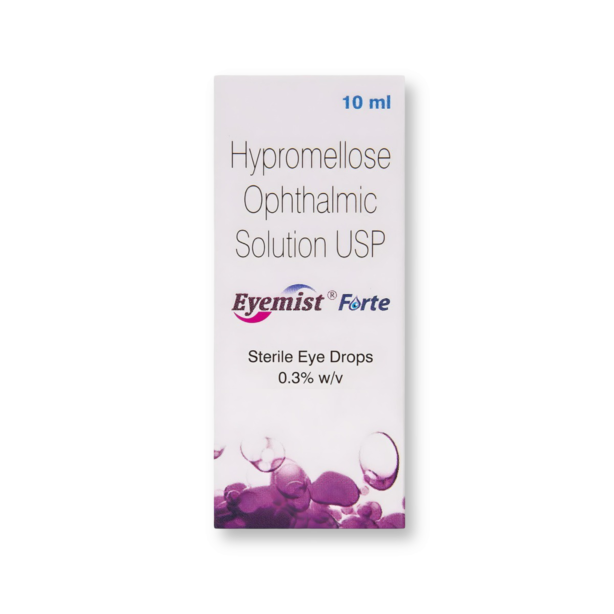
Eyemist Forte 10 ml
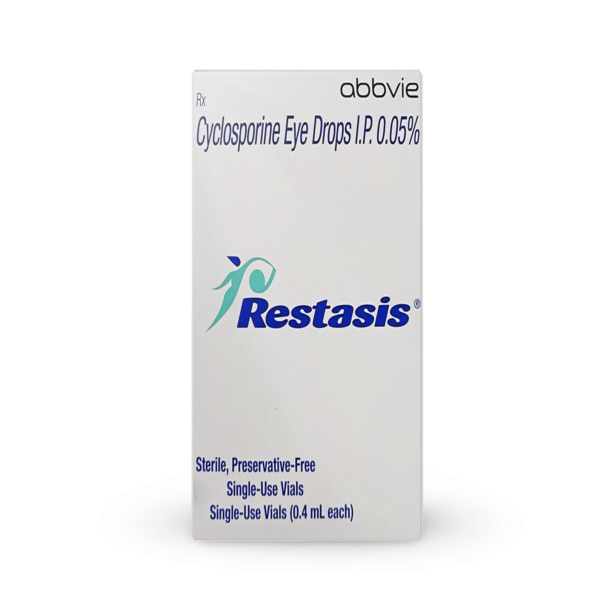
Restasis 0.05% Ophthalmic Emulsion 0.4ml
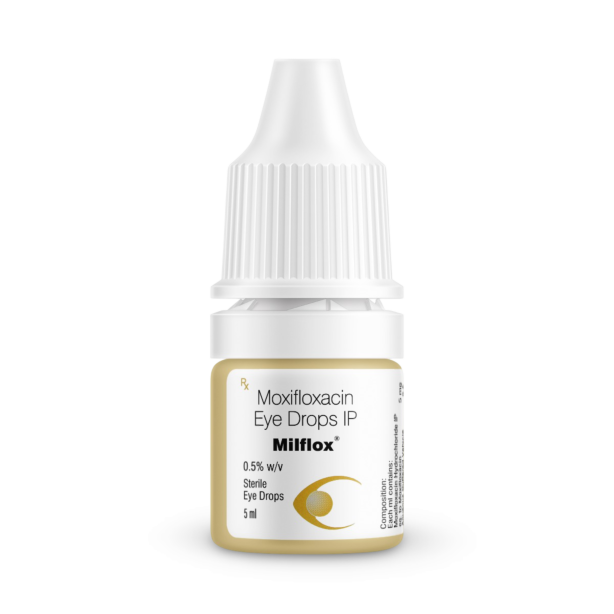
Milflox 0.5% 5 ml
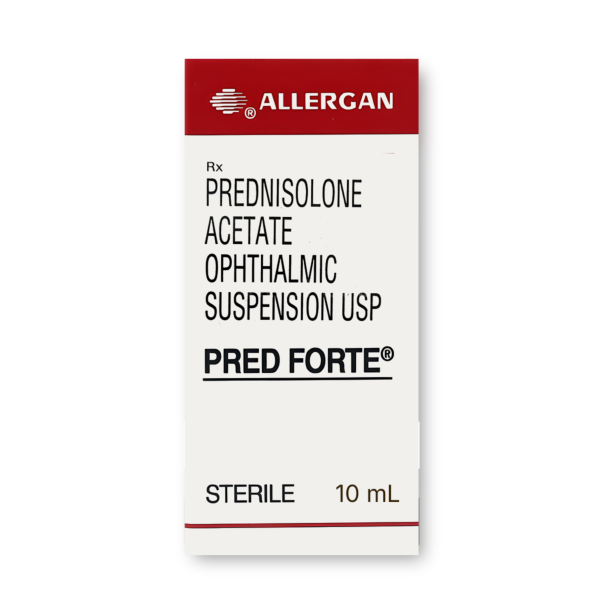
Pred Forte 10 ml
1. Prescription eye drops for viral Pink Eye
Viral Conjunctivitis is the most prevalent kind of Conjunctivitis brought on by a virus like the flu or the common cold. It is often mild in nature.
Without medical treatment, the infection normally goes away in 7 to 14 days with no lasting effects. There aren’t many treatment options for treating viral Pink Eye.
Antibiotics are ineffective against viruses. Thus, they won’t help in treating Viral Conjunctivitis.
A doctor may suggest artificial tears or anti-viral eye drops like Aciclovir, in specific cases, to address the symptoms of Viral Pink Eye. However, they provide only temporary relief and are generally used 3-4 times daily.
Anti-viral eye drops typically start working in a few hours and are prescribed for 7-10 days. Artificial tears start working immediately and are prescribed for 1-2 weeks for Pink Eye.
2. Prescription eye drops for bacterial Pink Eye
Bacterial Conjunctivitis, or Pink Eye, occurs due to an infection caused by bacteria. Treatment with antibiotics is not necessary for mild Bacterial Conjunctivitis. The infection usually gets better in 2-5 days without any treatment, but it may take up to 2 weeks to go away completely.
Your doctor can recommend an antibiotic, often used topically as eye drops or ointment. These may lessen the disease’s duration and effects and stop it from spreading to other people.
The type of antibiotics your doctor prescribes and the severity of your condition will determine the dosage suitable for you. Although most people respond to antibiotics well, sometimes they might irritate the eye, leading to increased redness.
The most commonly prescribed antibiotics for bacterial Pink Eye include Ciprofloxacin, Ofloxacin, Azithromycin, and Levofloxacin. These may be used for 3-7 days to improve symptoms.
3. Prescription eye drops for allergic Pink Eye
Allergy-induced Conjunctivitis can be brought on by dust, pollen, pet hair, and other environmental factors. This type of Pink Eye is not communicable. It usually causes a burning sensation in the eyes, making them watery and itchy.
Topical antihistamines, topical mast cell inhibitors, and topical corticosteroids are the most often used eye drops for Allergic Conjunctivitis.
Topical antihistamines
This class of medications is highly effective for Allergic Conjunctivitis and is used twice daily. It blocks the effects of Histamine, a chemical released when it comes into contact with an irritant, such as dust, pollen, mold, or pet dander. This, in turn, reduces pain, irritation, and inflammation. However, it could lead to Dry Eyes.
Commonly prescribed antihistamines include Bepotastine, Emedastine, and Epinastine. You can notice symptom relief as early as 3-15 minutes. However, they show maximum effects in an hour, and relief lasts only a few hours. The doctor decides the duration of the treatment based on the allergic symptoms.
Topical mast cell inhibitors
They include options, such as Lodoxamide, Nedocromil, and Pemirolast, that stop the body from producing Histamine as an allergic response. They also help overcome symptoms of Allergic Conjunctivitis.
Mast-cell stabilizers can take up to 2 weeks to start functioning and are meant to be used as a preventative measure rather than proper treatment. They are usually well tolerated with no serious side effects and can be taken 2-4 times daily for several months.
Topical corticosteroids
These eye drops are usually used in case of severe Allergic Conjunctivitis. Topical corticosteroids like Loteprednol etabonate, Dexamethasone, and Prednisolone aid in reducing swelling, redness, and itchiness from the eyes.
They start symptom relief in an hour with peak results in 1-3 days. Usually, they are prescribed for 1-2 weeks. Do not use them without a doctor’s consultation.
When not to use prescription eye drops for Pink Eye
As discussed, you do not always need eye drops for Pink Eye treatment. However, some other exceptions to consider before/during treatment are:
- Allergic reactions: People with a history of allergy or hypersensitivity to the medications or ingredients should not use eye drops.
- Side effects: Avoid using it if you experience severe pain, vision changes, cloudy eyes, suspected injury, or a rash near the eyes or face.
- Contact lenses: Do not use eye drops for Pink Eye while wearing contact lenses. Wait until the infection is cleared and the doctor approves.
- Pregnancy and breastfeeding: Avoid unless specifically approved by your doctor.
- Cause of Pink Eye: Antibiotics don’t work for viral or Allergic Conjunctivitis. Avoid unnecessary use.
- No improvement or worsening: Stop and see a doctor if symptoms persist or worsen after 48 hours.
- Relevant medical history: Certain drops (like Chloramphenicol) are unsafe in people with blood disorders.
Conclusion
Pink Eye is caused mainly by three causes: bacteria, viruses, or allergies, which lead to redness, itching, and discomfort. While mild cases may resolve without treatment, prescription eye drops for Pink Eye offer targeted relief and faster recovery.
Antibiotic drops treat bacterial infections and shorten their course. Antiviral drops like Aciclovir ease Viral Conjunctivitis symptoms, though they don’t speed healing dramatically. For Allergic Conjunctivitis, antihistamines, mast cell stabilizers, and corticosteroids can effectively reduce itching and inflammation, with corticosteroids reserved for severe cases.
Artificial tears help relieve dryness and irritation in all types. Always follow your doctor’s guidance to use the right drops for your condition and duration to keep your eyes healthy and comfortable.

Frequently Asked Questions
How can I prevent Pink Eye from spreading to others?
Wash your hands often, avoid touching your eyes, and don’t share towels, bedding, or makeup. Disinfect frequently touched surfaces and replace items like pillowcases regularly. For contagious types, avoid close contact until symptoms fully resolve to reduce the risk of transmission.
Are there any side effects of using corticosteroid eye drops?
Yes, possible side effects include increased eye pressure, delayed healing, Cataract risk with long-term use, and a higher chance of infection. They should always be used under a doctor’s guidance and for the shortest duration necessary to control severe conjunctivitis symptoms.
Can Pink Eye cause vision problems if left untreated?
Yes, while mild cases rarely cause lasting damage, untreated severe infections, especially bacterial or viral, can lead to corneal inflammation or scarring, affecting vision. Timely treatment reduces these risks and helps preserve long-term eye health and comfort.
Is it safe to use expired prescription eye drops?
No, expired drops may be contaminated or lose effectiveness, risking further irritation or infection. Always check expiration dates and follow medical advice. Discard any unused medication after completing your prescribed course to avoid potential harm.
Can I combine prescription eye drops for Pink Eye with over-the-counter (OTC) eye drops?
No, it is recommended that you speak with your doctor before combining over-the-counter and prescription eye drops. Some over-the-counter eye drops may affect the workings of the prescription eye drops, thus worsening your condition.
When referencing outside resources, GoodrxMedicine always provides full citations. To learn more about the measures we use to maintain the quality of our content, please review our Content Information Policy.



